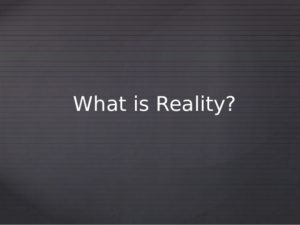 According to a well-known theory in quantum physics, a particle’s behavior changes depending on whether there is an observer or not. It basically suggests that reality is a kind of illusion and exists only when we are looking at it. Numerous quantum experiments were conducted in the past and showed that this indeed might be the case.
According to a well-known theory in quantum physics, a particle’s behavior changes depending on whether there is an observer or not. It basically suggests that reality is a kind of illusion and exists only when we are looking at it. Numerous quantum experiments were conducted in the past and showed that this indeed might be the case.
Now, physicists at the Australian National University have found further evidence for the illusory nature of reality. They recreated the John Wheeler’s delayed-choice experiment and confirmed that reality doesn’t exist until it is measured, at least on the atomic scale.
Thought-provoking findings
Some particles, such as photons or electrons, can behave both as particles and as waves.Here comes a question of what exactly makes a photon or an electron act either as a particle or a wave. This is what Wheeler’s experiment asks: at what point does an object ‘decide’?
The results of the Australian scientists’ experiment, which were published in the journal Nature Physics, show that this choice is determined by the way the object is measured, which is in accordance with what quantum theory predicts.
“It proves that measurement is everything. At the quantum level, reality does not exist if you are not looking at it,” said lead researcher Dr. Andrew Truscott in a press release.
The experiment
The original version of John Wheeler’s experiment proposed in 1978 involved light beams being bounced by mirrors. However, it was difficult to implement it and get any conclusive results due to the level of technological progress back then. Now, it became possible to successfully recreate the experiment by using helium atoms scattered by laser light.
Dr. Truscott’s team forced a hundred of helium atoms into a state of matter called Bose-Einstein condensate. After this, they ejected all the atoms until there was only one left.
Continue reading here.
